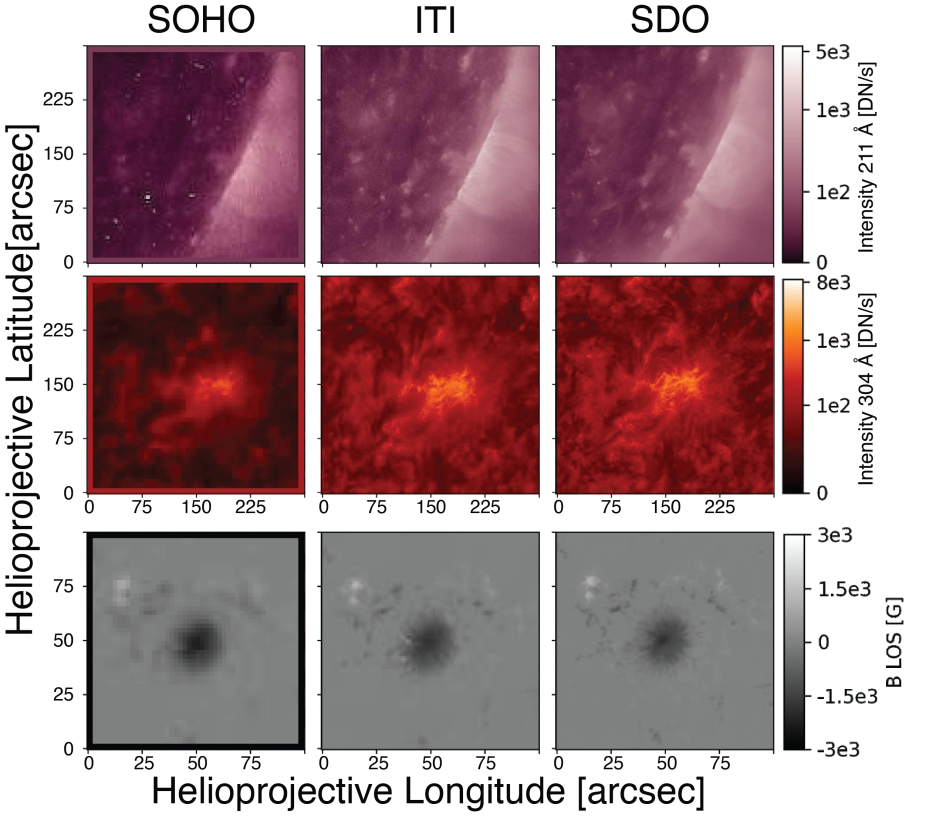Nature Communications: The constant improvement of astronomical instrumentation provides the foundation for scientific discoveries. In general, these improvements have only implications forward in time, while previous observations do not benefit from this trend, and the joint use of data sets from different instruments is typically limited by differences in calibration and quality.
Researches from the High Altitude Observatory (NSF NCAR; USA), in collaboration with researchers from the University of Graz (Austria), and Skolkovo Institute of Science and Technology (Skoltech; Russia), recently developed a new deep learning framework for Instrument-To-Instrument translation of solar observation data, enabling homogenized data series across multi-instrument datasets. The approach uses unpaired domain translations with Generative Adversarial Networks, which eliminate the need for spatial or temporal overlap to relate instruments. The study demonstrates that the available data sets can directly profit from instrumental improvements, by applying the method to four different applications of ground- and space-based solar observations. The authors obtain a homogenized data series of 24 years of space-based observations of the solar EUV corona and line-of-sight magnetic field, solar full-disk observations with increased spatial resolution, real-time mitigation of atmospheric degradations in ground-based observations, and unsigned magnetic field estimates from the solar far-side based on EUV imagery. The direct comparison to simultaneous high-quality observations shows that the method produces images that are perceptually similar, and enables more homogeneous multi-instrument data sets without the requirement of spatial or temporal alignment.

Occasional overlapping observations between different instruments allow for direct comparison between AI-enhanced images and high-quality reference data. This figure presents side-by-side views of original space-based observations from SOHO/EIT, their AI-enhanced counterparts, and reference observations from SDO/AIA. The three rows highlight different solar features: the Extreme Ultraviolet observations of the solar limb (top), an active region (middle), and the magnetic field of a sunspot (bottom).
Jarolim et al., 2025
The results were published in Nature Communications (https://doi.org/10.1038/s41467-025-58391-4).